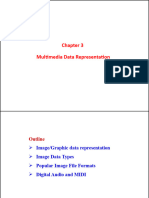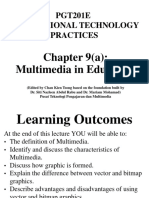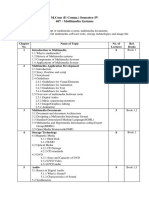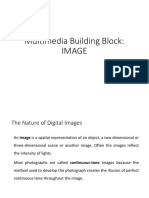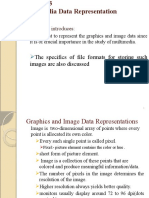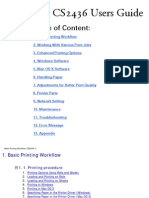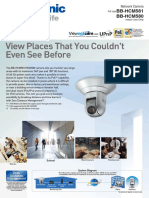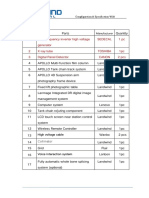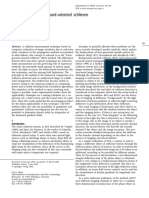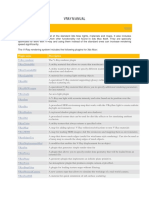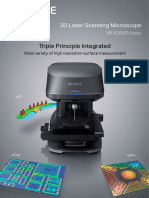0% found this document useful (0 votes)
30 views27 pagesLecture3 Multimedia
The document discusses different types of digital media representation and formats, including text, images, video, audio, and graphics. It focuses on digital image formats such as bitmap images and vector images. Bitmap images represent images using pixels of different colors arranged in a grid, while vector images use geometric primitives like points, lines, and shapes defined by mathematical equations. The document also covers concepts like bit depth, color models, image resolution, and common file formats for digital images.
Uploaded by
abdelazemahmed1Copyright
© © All Rights Reserved
We take content rights seriously. If you suspect this is your content, claim it here.
Available Formats
Download as PDF, TXT or read online on Scribd
0% found this document useful (0 votes)
30 views27 pagesLecture3 Multimedia
The document discusses different types of digital media representation and formats, including text, images, video, audio, and graphics. It focuses on digital image formats such as bitmap images and vector images. Bitmap images represent images using pixels of different colors arranged in a grid, while vector images use geometric primitives like points, lines, and shapes defined by mathematical equations. The document also covers concepts like bit depth, color models, image resolution, and common file formats for digital images.
Uploaded by
abdelazemahmed1Copyright
© © All Rights Reserved
We take content rights seriously. If you suspect this is your content, claim it here.
Available Formats
Download as PDF, TXT or read online on Scribd
/ 27










